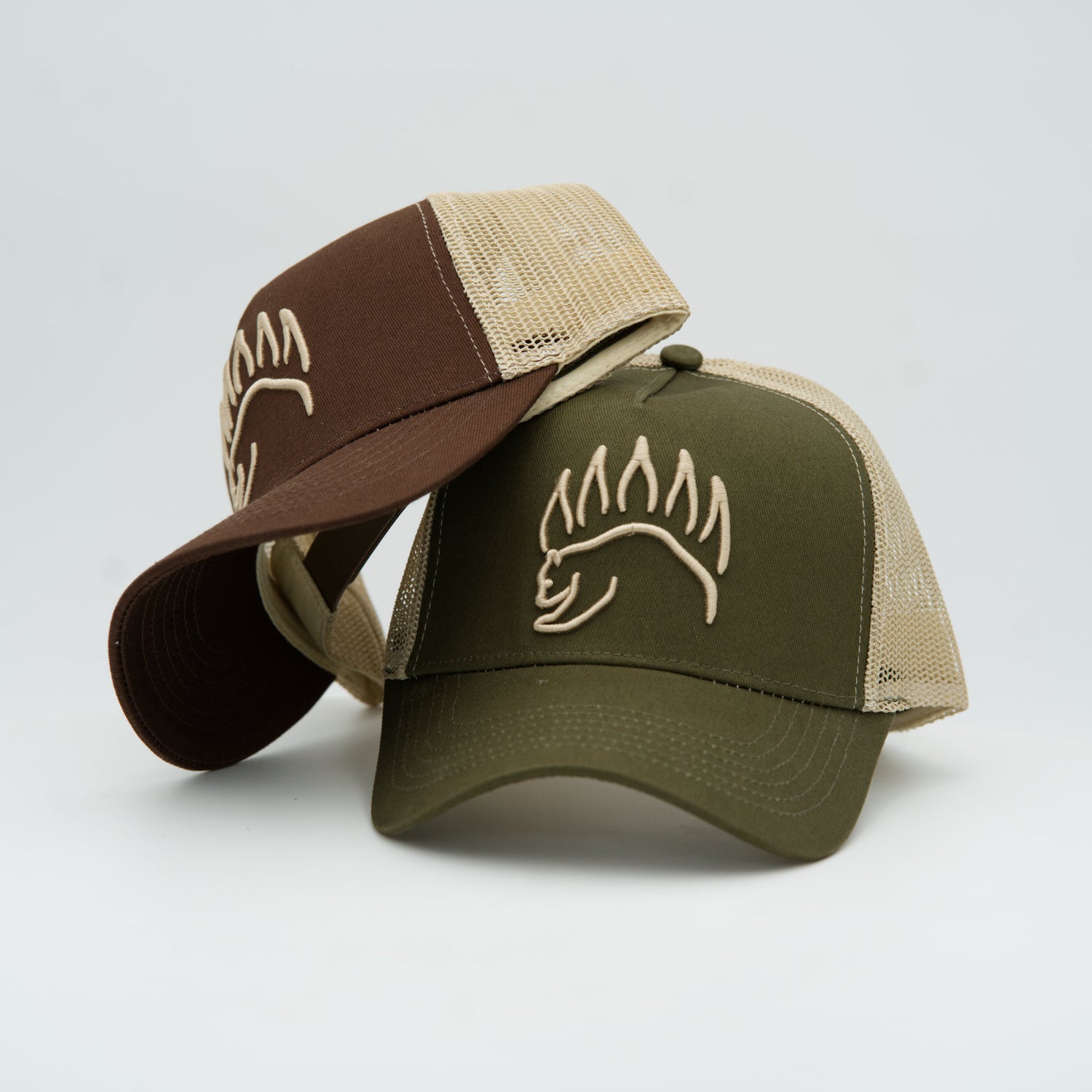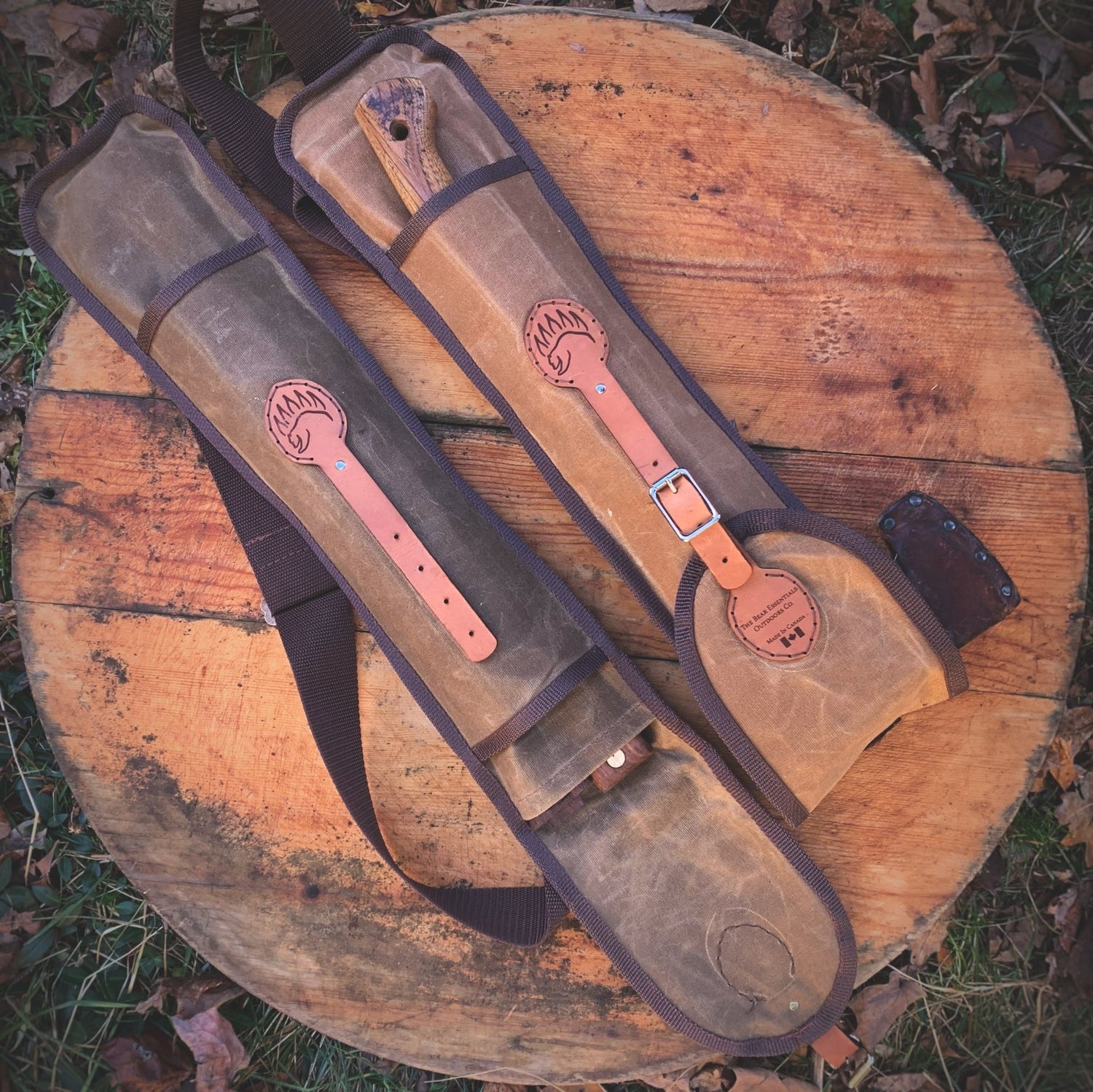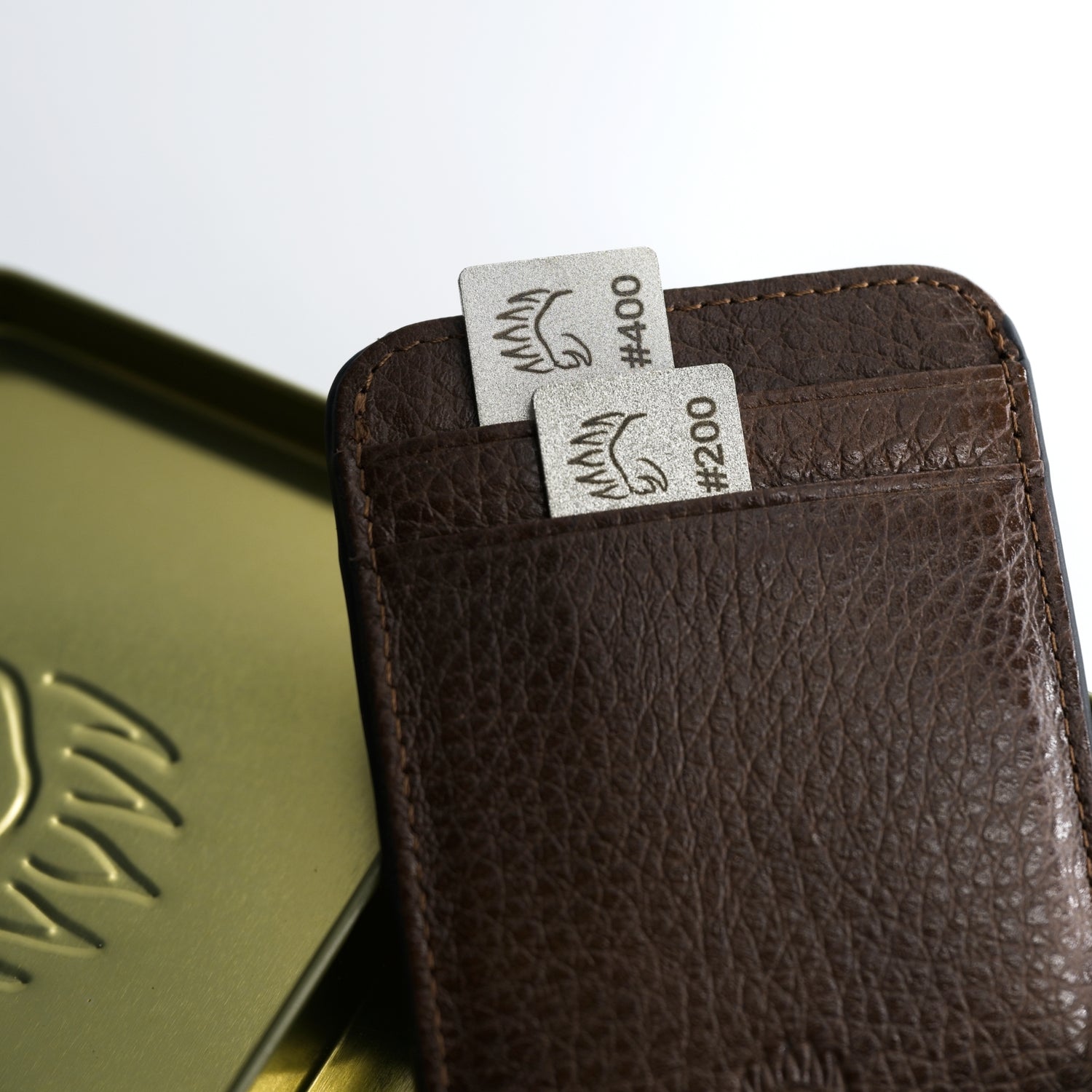Dyneema®, Spectra®, Amsteel/Amsteel Blue, Zing-It/Lash-It—this whole family of HMPE rope (high-modulus polyethylene rope) is rocket fuel for strength-to-weight. It’s feather-light, barely stretches, laughs at UV, and shrugs off water.
The trade-off? It’s slick—tying knots in Dyneema with “normal” patterns can creep, capsize, or pull through.
Today we’ll keep it simple and bomb-proof: the smallest possible kit that actually holds—
- EStar Stopper (a real Dyneema stopper knot)
- EStar Hitch (for slick cord grab)
- Buntline Hitch (hardware hero)
-
Water Bowline (secure end loop)
—and we’ll be honest about when a splice beats any knot.
This is my no-drama guide to the Best knots for Dyneema and other slippery lines like Spectra cord, Zing-It, and Lash-It.
TL;DR
- Must not slip to hardware? Use a Buntline Hitch. It bites hard on slick cord and stays compact.
- Need a dependable loop in HMPE? Choose a Water Bowline—more secure than a regular bowline in wet/low-friction rope (see water bowline vs bowline notes below).
- Stopper keeps pulling through? Tie an EStar Stopper—a purpose-built Dyneema stopper knot for single-braids.
- Critical loads or life/safety? Don’t argue. Splice (locked Brummel, long bury). Knots in HMPE can reduce strength significantly.

Why HMPE (Dyneema/Spectra) Is Tricky
Low friction + low stretch is an incredible combo for efficiency, but tough on knots. Traditional patterns rely on the rope’s surface “biting” to hold shaped coils; HMPE’s slick fibers let turns glide before they fully seat. Add HMPE’s low stretch—which doesn’t “cushion” your yank—and a clumsy set can act like a micro-winch that skates wraps instead of tightening them.
Also, tight bends rob strength. All knots reduce line strength; on HMPE that drop can be dramatic because the fibers don’t like sharp radii. The working recipe is simple:
- Prefer geometries with long contact paths and choking wraps (more friction, less slip).
- Dress perfectly (no crosses where they shouldn’t be).
- Seat progressively in the line of pull (no side yanks).
-
Know when to splice instead of knot.
Best Knot for Slippery Rope: Decision Matrix
You don’t need a hundred patterns. You need four that you can tie perfectly.
-
To a ring/eye/carabiner (fixed, non-slip): Buntline Hitch
Why: compact, high security on slick cord; expect it to jam after heavy load (a feature, not a bug). -
End-stop that won’t pull through single-braid HMPE: EStar Stopper
Why: conventional overhands can pull through; EStar was devised to resist that in Dyneema. -
Loop at rope end (non-cinching): Water Bowline
Why: extra turn = extra grip in wet/slick rope; better than a plain bowline in HMPE. -
HMPE lashing start/finish: Buntline Hitch → tight, even wraps → lock with half-hitches
Why: Buntline anchors the lashing; multiple wraps share load on Dyneema rope knots. - If in doubt or stakes are high: Splice (locked Brummel for Amsteel Blue knots; long bury, proper taper).
The “Never-Slip” Core Set
EStar Stopper — The HMPE End-Stopper That Stays

What it is: A multi-turn stopper designed to refuse pull-through in single-braid HMPE where overhand/double-overhand stoppers can fail.
When to use it:
- Backing up adjustable hitches or lashings on Zing-It/Lash-It.
- Anywhere a tag might retreat under vibration.
-
As the “confidence” cap on the bitter end when you’re testing new Dyneema rope knots.
How to tie (quick cues):
- Build the specified sequence of wraps carefully (this pattern is precise).
- Dress tight, flatten crossings, and set hard.
-
Leave a meaningful tail—HMPE traditions always respect tails.
Why it helps: A purpose-built Dyneema stopper knot adds friction and bulk without relying on a single, easily inverted nub.
EStar Hitch — Slick-Cord Hitch With Bite
What it is: A hitch pattern documented alongside the EStar stopper by the knot-nerd community specifically for slippery rope.
When to use it:
- Temporary but firm attachment to smooth posts/eyes where a standard hitch creeps.
-
DIY rigging on Spectra cord or Zing-It where you need more grab than a clove/buntline alone.
How to tie (quick cues):
- Follow the pattern exactly; dress each crossing so nothing rides.
-
Field-test it on your cord—HMPE finishes and diameters vary.
Why it helps: It increases contact length and creates a choke that resists the “skating” habit of HMPE.
Note: If your application is critical or long-term, favor the Buntline Hitch or a proper splice.
Buntline Hitch — Compact, High-Security Hardware Hitch

What it is: A simple turn-and-tuck hitch that cinches tight to an eye, ring, or shackle. In HMPE, it’s a star.
When to use it:
- Clip-ins, rings, carabiners, tarp hardware, and the start/finish of HMPE lashings.
-
Anywhere you’d usually use a bowline to hardware, but want a smaller, more secure footprint.
How to tie (pro cues):
- Take a full turn around the hardware (or two for tiny cord).
- Pass the tag behind the standing part and tuck up through the loop (classic Buntline), not the other way.
- Dress tight; seat progressively in line with the load.
-
Expect it to jam after heavy load—plan to leave it or use a marlinspike to work it free.
Why it helps: The Buntline’s geometry makes a little “barrel” that chokes on the standing part. On Amsteel and Amsteel Blue, it’s one of the few compact hitches that consistently refuses to slip.
Water Bowline — The End Loop That Behaves on HMPE

What it is: A bowline variant with an extra turn around the standing part before completing the bowline structure.
When to use it:
- You need a Dyneema loop knot that won’t cinch: handholds, anchors around posts, connect to a big ring without hardware.
-
Wet/slick environments where a standard bowline might capsize or work loose.
How to tie (pro cues):
- Make the “water turn” (an extra wrap around the standing part).
- Finish the bowline as usual (“rabbit out the hole, around the tree, back down the hole”).
- Dress meticulously so the extra turn lies flat and collars snug.
-
In HMPE, leave a longer tail and consider a compact backup (EStar Stopper) against shake-loosen cycles.
Water bowline vs bowline: The extra turn increases friction and stability. In high modulus polyethylene rope, that added bite is exactly what keeps the loop from morphing under vibration.
How to Make the Best Knot for Slippery Rope Actually Hold
Longer friction paths. Favor patterns with extra wraps and long contact (EStar, Buntline’s choke, Water Bowline’s extra turn). More clean surface contact = more grip on Dyneema rope knots.
Seat like a grown-up. Pull tag + standing together first to snug coils into position, then load the standing line in a straight line. HMPE hates sideways shock; it lets coils skate before they bite.
Wet isn’t the issue—heat is. HMPE doesn’t absorb water, but any rope can suffer from fast, dry, high-pressure cinches. Slow down. Let friction equalize as you seat.
Back up critical ties. For mission gear, add a stopper (EStar) snug to the knot and witness-mark the tail with a Sharpie so creep is obvious.
Know when to splice. Standing rigging, lifelines, hammock suspensions, high loads—splices (locked Brummel + long bury with taper) beat even the best knot for Dyneema rope on strength and reliability.
Use-Case Playbook: Quick Wins
Hammock & Tarp Hardware (Zing-It / Lash-It)
- Best knot for slippery rope for beginners (easy and reliable): Buntline Hitch to hardware.
- End loop for straps or posts? Water Bowline.
- Tag security? EStar Stopper.
-
Always test under real pitch tension; Zing-It is infamously slick.
Small-Boat & Lifeline Lashings (Single-Braid Dyneema)
- Start: Buntline Hitch to the eye.
- Build: 6–8 tight, even wraps; keep lengths equal so load shares.
- Finish: Two half-hitches or a compact lock on the standing part.
-
Inspect: Witness-mark tails; if anything moves after the first sail, redo.
Utility Loop in Amsteel / Amsteel Blue
- Temporary handhold or anchor? Water Bowline (clean dressing, longer tail, optional EStar backup).
-
Long-term or high load? Replace with a locked Brummel splice.
Testing Protocol (So You Trust Your HMPE Knots)
- Bench test your exact cord. Tie each candidate knot 3×; load to working level with a scale or bodyweight system.
- Mark and monitor. Sharpie a line across the knot and tail. If the line “opens,” you’ve got creep.
- Change one thing at a time. Add a wrap, slow the set, swap to Water Bowline, or move to Buntline; re-test.
-
Wet/grit reality check. HMPE behaves differently with salt/sand. Rinse and re-test your “keepers.”
Troubleshooting and Myths
“My stopper pulled through the bury.”
Use an EStar Stopper. That’s what it’s for.
“My hitch creeps under steady load.”
Upgrade to a Buntline Hitch, add a riding turn or extra half-hitches, and seat harder. Consider turning the job into a lashing with multiple wraps.
“Bowline is fine in everything.”
Not in HMPE. A plain bowline can relax or capsize on high modulus polyethylene rope. Choose the Water Bowline (plus backup) or splice.
“Knots are as strong as splices.”
Not in HMPE. Expect a bigger strength penalty from knots; splices preserve line strength and resist slip.
“Best knot for slippery rope easy = any clinch style.”
For HMPE, clinch-style hitches often skate. Best knot for slippery rope easy is Buntline to hardware and Water Bowline for loops—both simple, both reliable.

Frequently Asked Questions: Best Knots for Dyneema, Spectra, Amsteel
What’s the best knot for Dyneema to a ring or clip?
The Buntline Hitch. It’s compact, chokes hard, and resists creep on slick lines like Zing-It, Lash-It, and Amsteel.
Best Dyneema loop knot?
The Water Bowline. It beats a regular bowline in wet/slick rope. For permanent or critical loops on Amsteel Blue, use a locked Brummel splice.
Which stopper actually holds on HMPE?
The EStar Stopper—a purpose-built Dyneema stopper knot to prevent pull-through.
Best knot for slippery rope for beginners?
To hardware: Buntline Hitch (simple, strong). For loops: Water Bowline (a touch more steps, but still easy). Both are the best knots for slippery rope that you can master fast.
Are Amsteel knots recommended for safety gear?
For high loads or life-safety, splice instead of knot. Knots can both slip and cut strength in HMPE.
I keep hearing “water bowline vs bowline”—what’s the difference?
The Water Bowline adds an extra turn around the standing part, boosting friction and stability. On Dyneema rope knots, that extra turn is the difference between “holds” and “hmm.”
Mini How-Tos
Buntline Hitch (to hardware)
- Round the hardware once (twice for a tiny line).
- Tag end behind standing part; up through the loop you just formed.
-
Dress flat; pull tag + standing together; finish with a straight-line set.
Water Bowline (end loop)
- Make the “water turn”: wrap the standing part twice.
- Complete the bowline (up through the hole, around the standing part, back through).
-
Dress so all turns lie neatly; long tail; optional EStar Stopper backup.
EStar Stopper (HMPE end-stop)
- Follow the multi-wrap recipe exactly (don’t improvise crossings).
-
Milk each wrap tight; set hard; clip tail to length after testing.
EStar Hitch (slick-cord hitch)
- Lay the required wraps around the post/eye.
- Tuck as specified; dress to eliminate any riding turns.
-
Field-test on your exact HMPE rope before committing.
Best Knots for Dyneema and Slippery Rope Cheatsheet
- Best knot for slippery rope: Buntline Hitch to hardware; Water Bowline for loops; EStar Stopper for tails.
- Best knots for Dyneema: Buntline, Water Bowline, EStar Stopper/EStar Hitch—splice for critical loads.
- Best knot for Dyneema rope (beginners): Buntline (easy + reliable).
- Dyneema loop knot: Water Bowline (+ backup).
- Dyneema stopper knot: EStar Stopper.
- Amsteel knots / Amsteel Blue knots: Prefer splices; Buntline/Water Bowline for temporary fieldwork.
-
Zing-It / Lash-It / Spectra cord: Same playbook—slick cord needs extra wraps, perfect dressing, and progressive seating.
Tie Smart, Test Hard, Splice When It Matters
Slick rope doesn’t have to mean slippery results. For HMPE rope like Dyneema/Spectra, the best knot for slippery rope is the one that respects the material: Buntline Hitch to hardware, Water Bowline for end loops, EStar Stopper to lock your tails, and EStar Hitch when you need a quick-grab pattern on small diameter cords. Dress them clean, seat them slowly, and test before you trust. And when the consequences are real or the loads are high, skip the debate—splice. That’s how you turn space-age lines into real-world reliability.
Tie once, pull hard, smile. That’s the Dyneema difference—when you use the right knots.




